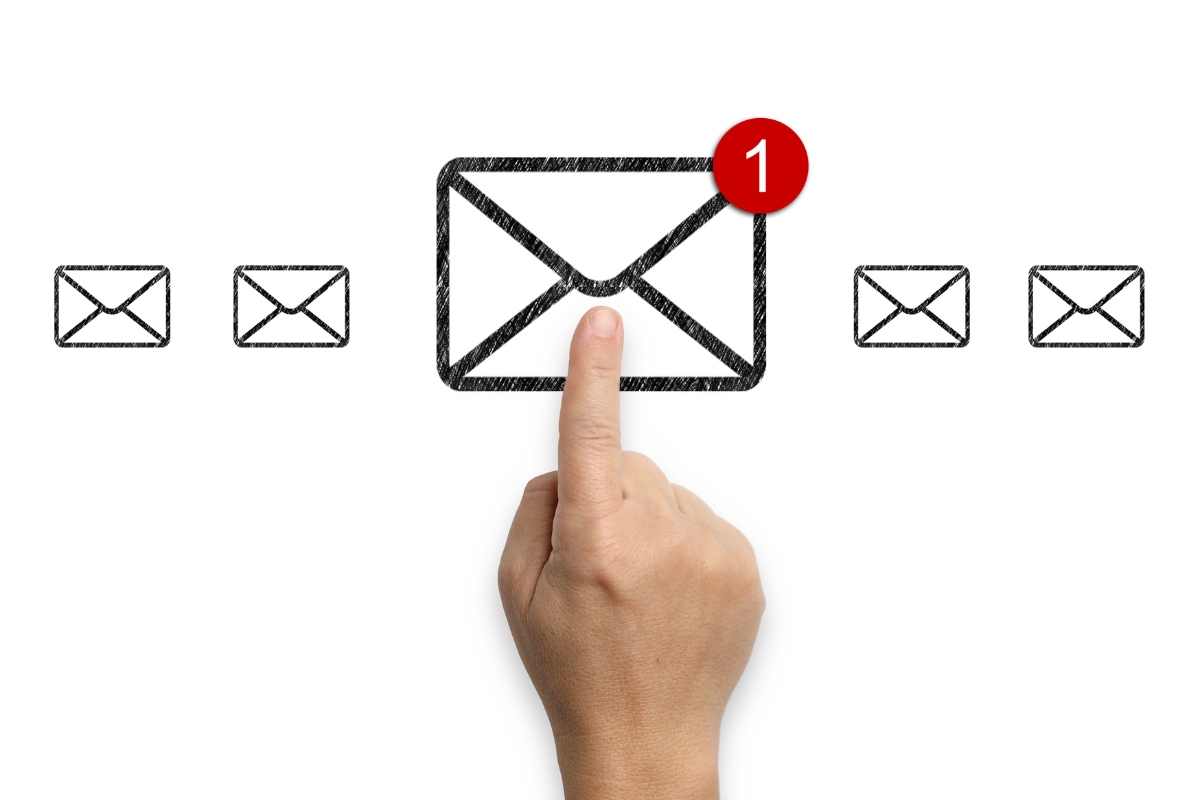Welcome to our blog, where we explore the art of mastering successful Mailchimp email marketing campaigns. As marketers and business owners, we know that email marketing plays a crucial role in building lasting relationships with our customers. And when it comes to email marketing, Mailchimp is a top-of-mind platform that provides everything you need to create and send effective campaigns.
In this article, we’ll delve into the world of Mailchimp email marketing and share actionable insights and real-world examples to help you create successful campaigns that resonate with your target audience. We’ll explore the key components of a well-crafted email campaign, from crafting eye-catching subject lines and engaging content, to segmenting your audience for personalized messaging that resonates.
So, join us as we explore the art of mastering successful Mailchimp email marketing and unlock its potential for your business. Get ready to connect with your audience, build lasting relationships, and drive meaningful results. Let’s get started!
Unlocking Success with Mailchimp: Are You Making the Most of Your Emails?
Understanding Audience Segmentation

In the world of email marketing, understanding your audience is key to creating effective campaigns that generate real engagement and drive results. This is where audience segmentation comes into play. Audience segmentation allows you to divide your subscribers into distinct groups based on specific characteristics, enabling you to tailor your messaging and offers to meet their unique needs and preferences.
By segmenting your audience, you can deliver highly targeted content that resonates with each group, leading to higher open rates, click-through rates, and ultimately, conversions. But how do you go about segmenting your email list effectively?
Start by analyzing your subscriber data to identify common patterns or characteristics. This could include factors such as demographics, purchase history, engagement levels, or even psychographic traits. By grouping subscribers with similar attributes together, you can create segments that represent different personas within your target audience.
For example, if you offer both products and services, you might segment your list into two groups: one for product-focused messaging and another for service-related offers. This allows you to provide tailored content that speaks directly to each group’s specific interests and needs.
Effectively segmenting your audience ultimately leads to better engagement and higher conversions. By understanding your subscribers’ preferences and delivering content that is relevant to their needs, you can build stronger relationships and foster brand loyalty.
Remember, customer segmentation for marketing is not a one-time process. Continuously evaluate and refine your segments as new data becomes available to ensure your campaigns stay relevant and impactful. By mastering the art of customer segmentation for marketing, you can unlock the true potential of your email marketing efforts and create meaningful connections with your subscribers.
Designing Eye-Catching Templates

When it comes to email marketing, designing eye-catching templates is crucial to capturing your audience’s attention and making a lasting impression. After all, in a crowded inbox, your email needs to stand out from the competition and entice recipients to open and engage with your content. Luckily, there are several key principles you can follow to create visually appealing and effective email templates.
First and foremost, simplicity is key. Clean, uncluttered designs with a clear hierarchy of information help facilitate easy comprehension and navigation for your recipients. Use whitespace effectively to give your content room to breathe and make important elements pop. Don’t forget to optimize your templates for mobile devices, as the majority of email opens now happen on smartphones.
Visual elements such as images, colors, and typography play a vital role in capturing attention and conveying your brand identity. Incorporate images that are relevant to your message and align with your brand’s style. Use bold and contrasting colors strategically to highlight important information and calls to action. And don’t overlook the power of typography—the right font choices can enhance readability and reinforce your brand’s personality.
Lastly, remember the importance of consistency. Develop a cohesive visual theme for your emails and maintain it across your templates to create a recognizable and memorable brand experience.
With these principles in mind, you can confidently design eye-catching email templates that captivate your audience, convey your message effectively, and drive the results you desire.
Personalizing Content for Maximum Engagement

In today’s digital landscape, personalization has become an essential component of any successful marketing strategy. By tailoring your content to individual consumers, you can create a more engaging and relevant experience that resonates with your audience. Personalized content allows you to connect with your customers on a deeper level, building trust and loyalty that can ultimately lead to increased conversions and customer satisfaction.
One powerful example of personalized content is Amazon’s recommendation engine. Using sophisticated algorithms, Amazon analyzes vast amounts of customer data to suggest products and services that are highly tailored to individual preferences. This personalized approach not only makes the shopping experience more convenient for customers, but it also increases the likelihood of cross-selling and upselling, driving higher revenue for the company.
Another notable example of personalization is Spotify’s Discover Weekly playlist. By analyzing a user’s listening history and preferences, Spotify curates a unique playlist of recommended songs every week. This personalized touch not only delights users, but it also keeps them engaged with the platform, driving longer session times and increased user retention.
So how can you implement personalization in your own marketing efforts? Start by leveraging data and analytics to gain insights into your customers’ behavior, preferences, and purchasing patterns. Use this information to segment your audience and deliver targeted content that speaks to their specific needs and interests. Whether it’s through personalized emails, tailored product recommendations, or curated content suggestions, strive to create a personalized experience that adds value to your customers’ lives.
A/B Testing for Optimization

A/B testing is a powerful technique that allows you to optimize your email marketing campaigns by systematically testing different variations of your content or design. By comparing the performance of two or more versions, you can gather valuable data and insights that inform your decision-making and help you achieve better results.
The process is simple: you create two (or more) versions of an email with a single element that you want to test, such as subject lines, call-to-action buttons, or email layouts. Then, you randomly divide your audience into different groups and send each group a different version of the email. Once the emails are sent, you can objectively analyze the results to determine which version performed better in terms of open rates, click-through rates, conversions, or any other metric of interest.
For example, let’s say you’re testing two subject lines for an upcoming sale: “20% Off Everything” and “Limited Time Offer: Don’t Miss Out on 20% Off.” By A/B testing these subject lines, you can identify which one grabs your audience’s attention and prompts more opens and engagement.
A/B testing offers you insights into what resonates best with your subscribers, allowing you to make data-driven decisions and optimize your campaigns for maximum impact. It helps you understand your audience’s preferences, discover opportunities for improvement, and refine your strategies over time.
By adopting a systematic approach to A/B testing, using robust planning, clear hypotheses, and reliable tracking tools, you can unlock the true potential of your email marketing efforts. Remember, each test builds upon the last, helping you continuously improve and achieve better results with each iteration.
Analyzing Metrics and Data Insights

In the fast-paced world of marketing, data is your secret weapon for unlocking success. By analyzing key metrics and data-driven insights, you gain a deep understanding of your audience, their behaviors, and the effectiveness of your marketing efforts. This valuable knowledge empowers you to make informed decisions, optimize your strategies, and achieve better results.
From open rates and click-through rates to conversion rates and bounce rates, there is a wealth of data at your fingertips. By carefully diving into these metrics, you can uncover meaningful insights that guide your marketing efforts. For example, if you notice low open rates, it may be time to revisit your subject lines and experiment with more captivating ones. By monitoring click-through rates, you can evaluate the effectiveness of your calls-to-action and make adjustments to improve engagement.
But data analysis doesn’t stop at the surface-level metrics. Digging deeper, you can uncover more granular insights that shape your marketing strategies. By segmenting your audience based on demographics, preferences, or past behaviors, you can tailor your messages and offers to specific groups, maximizing relevance and engagement. For instance, if you notice a certain segment responding positively to a particular type of content, you may want to invest more in producing similar content for that group.
Implementing Call-to-Actions Effectively

Crafting compelling call-to-actions (CTAs) is a cornerstone of effective marketing. These strategic prompts are your gateway to driving action among your audience, whether it’s making a purchase, signing up for a newsletter, or downloading a resource. Implementing CTAs effectively requires a blend of creativity, data-driven insights, and a deep understanding of your audience’s needs and preferences.
When creating CTAs, focus on clarity, urgency, and relevance. Your CTAs should clearly communicate the desired action and why it’s beneficial to the user. Use active language that prompts immediate engagement, such as “Shop Now,” “Learn More,” or “Start Your Free Trial.” Incorporating urgency-inducing words like “Limited Time Offer” or “Act Now” can further propel users to take action swiftly.
An exemplary implementation of CTAs can be seen in HubSpot’s marketing emails. Their CTAs are not only visually striking but also concise and action-oriented, guiding recipients to engage with specific content or resources seamlessly. By strategically placing CTAs throughout their emails and aligning them with the content’s context, HubSpot effectively drives conversions and nurtures leads through the customer journey.
To optimize your CTAs, leverage A/B testing to refine their performance. Experiment with different designs, copy variations, colors, and placements to identify what resonates best with your audience. By analyzing metrics like click-through rates and conversion rates, you can fine-tune your CTAs for maximum impact and ensure they are aligned with your overarching marketing objectives.
Enhancing Deliverability and Open Rates

As a marketer or business owner, you know that creating engaging email content is only half the battle. Ensuring your email campaigns reach your subscribers’ inboxes and get opened is the other critical half – one that can determine the success of your efforts. Maximizing the impact of your email marketing campaigns requires a strategic approach that focuses on enhancing deliverability and open rates.
To improve deliverability, keep your email list clean and up-to-date. Removing inactive or inaccurate email addresses, encouraging subscribers to update their contact information, and closely monitoring bounce rates can improve your sender reputation, increase deliverability, and reduce the chances of your emails ending up in the spam folder.
Optimizing open rates requires carefully crafting subject lines and preheader text that capture your subscribers’ attention and entice them to open your emails. Personalizing subject lines, teasing content, and asking questions can be effective tactics to arouse curiosity and prompt engagement. A/B testing can help determine which strategies work best for your audience and optimize your approach accordingly.
Conclusion: Elevate Your Email Marketing with Mailchimp
By utilizing Mailchimp’s robust features, you can create targeted campaigns that resonate with your subscribers. From customizable templates to personalized content, Mailchimp empowers you to craft emails that captivate your audience and drive engagement. By incorporating eye-catching designs and compelling messaging, you can effectively convey your brand’s story and offerings.
Is it time to take your email marketing to the next level? Reach out to Newman Web Solutions at (404) 301-9189 or go on our website to book a 30-minute free marketing strategy session with us. Let us show you how we can tailor our digital marketing services to meet your brand’s needs and help you achieve your marketing goals.





